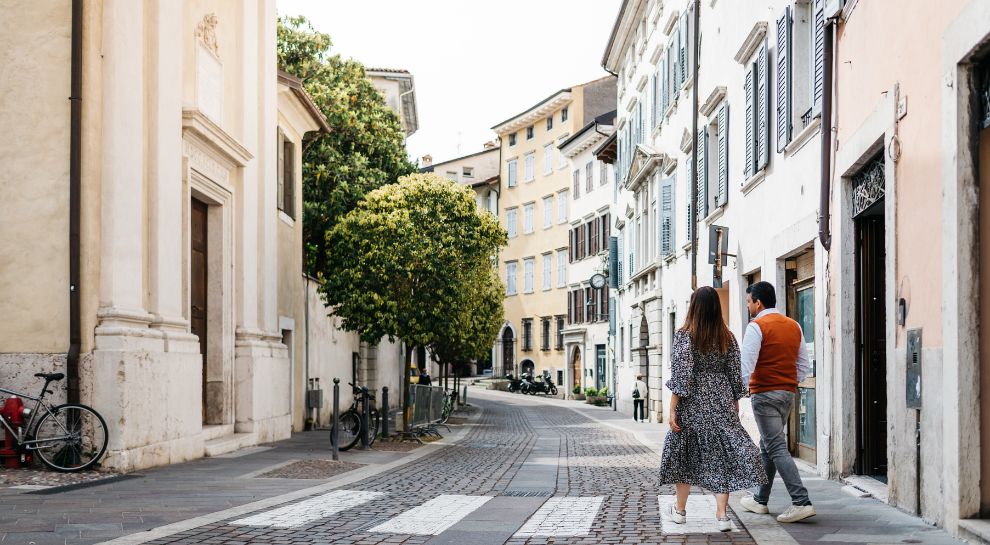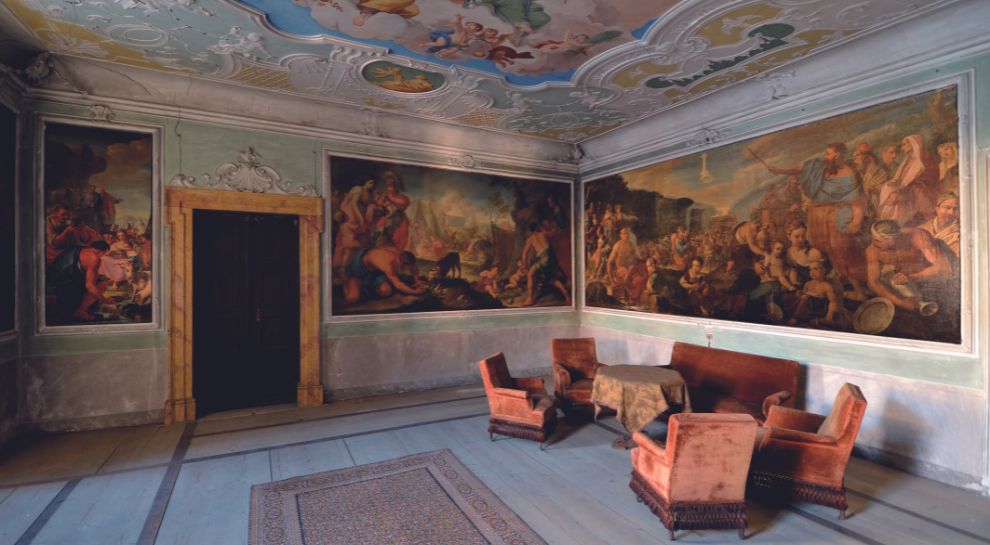Palazzo Betta-Grillo
Refinement and luxury in a residence in the heart of Rovereto
A patrician residence with important painting cycles, a salon on the main floor that is unique in Vallagarina architecture and a botanical garden with a great variety of ornamental species.
In 1728, the palace, built by the Regola di Lizzana community, was purchased by the Betta family. At the time of the transfer of ownership, the building was still incomplete and was not finished until 1730.
The main floor of the Betta-Grillo palace is extremely representative of the refinement and luxury that was widespread in Rovereto’s patrician homes during the 18th century. The pictorial cycles also testify to the love of art and the high cultural level of the patrons, key elements of a period characterised by great intellectual vivacity.
Palazzo Betta-Grillo houses an important pictorial cycle consisting of seven large canvases depicting episodes from the life of Moses. The author of the paintings is Gasparantonio Baroni Cavalcabò, one of the most important Lagarine artists of the 18th century, who in this case worked in collaboration with his older cousin Giovanni, also a painter.
Also extremely interesting is the salon on the main floor of the palace, which is unique in Vallagarina architecture between the 18th and 19th centuries. This representative space is characterised by an elliptical dome with lacunars painted on the ceiling with an illusionistic effect and two diaphragms, made of real pink marble columns, that divide the interior space into three distinct areas. On the walls, a pictorial cycle depicting scenes from Orlando Furioso can be admired. These paintings were executed at the end of the 18th century by Giovanni di Dio Galvagni, an artist originally from Isera.
The furniture and ornaments in the rooms suffered fairly limited damage during the devastation and looting of the Great War; a rare occurrence in a town that emerged prostrate from the war events. The building was then saved from bombing during World War II and, thanks to light and constant maintenance, from degradation due to the passage of years.
The historic garden retains its late 19th-century layout intact and offers a large sample of the ornamental botanical species common at that time.
Palazzo Betta-Grillo is also the birthplace of Lionello Fiumi (1894-1973), a poet, critic, essayist and storyteller of international renown.
In 1899, the building was purchased by the Grillo family.
Now the building is municipal property, as the last descendant of the family, Professor Maria Angelica Grillo, donated it to the city of Rovereto in September 2017.
Info and map
Opening time
Open to the public:
Visits are temporarily suspended to allow restoration work to the garden and the interior.
For further information: 327 7121209 | touringclubtrento@gmail.com.




